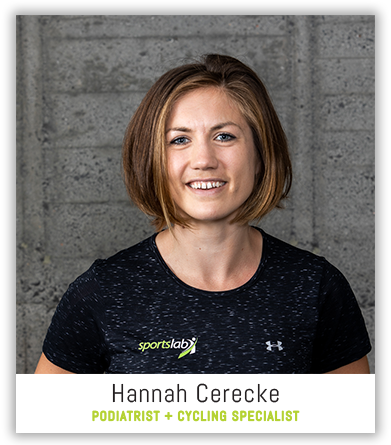Should Running Shoes Cure Pronation?
There is much debate, especially on social media, about the “pronation paradigm” of fitting running shoes and many “running geeks” have strong opinions on either side of this debate. All you need to do is google the term pronation to be bombarded with information and opinion.
‘Pronation’ is a term used to describe a movement at a joint, somewhat like the term ‘flexion’ that can be used to describe the movement of the knee bending. Where flexion occurs in a single plane of motion, pronation occurs in three planes of motion so is a complex movement. In the foot, pronation occurs naturally when the foot comes in to contact with the ground and is useful for dissipating the force that the foot receives from the ground. Pronation will appear as the ankle rolling inward and the arch flattening. Pronation in the foot is driven largely by the two bones in the rearfoot, the heel bone (calcaneus) and the bone that sits above it (the talus). The amount of pronation and the rate at which it occurs can have direct impacts on the twisting movements of the legs (external and internal rotation) and how well the foot is able to create propulsive forces in pushing off the ground with the toes.
So we know that pronation is a normal and a highly beneficial movement that occurs in the foot, but what about all you people out there that have been told you “overpronate”? Firstly, there is no definitive objective measurement as to exactly how much is too much pronation. Overpronation is subjective and not as black and white as it’s sometimes made out to be. In basic terms, overpronation is a term used to describe what the evaluator would deem as pronation occurring in excess or too rapidly and puts the person at increased risk of injury.
The pronation paradigm of fitting running shoes is where the shoe fitter classifies a foot based on how much and how rapidly it pronates and then fits a shoe aimed to control this pronation. This way of fitting running shoes first started back in 1979 when the footwear brand ‘Brooks’ brought out a shoe designed by podiatrist Steve Subotnik with a wedge of firmer density on the inside edge of the rearfoot of the shoe in order to control pronation. This shoe revolutionized footwear design during the running boom of the 1980’s and has continued to lead the market up until present day. But the fact that there is a debate at all around this fitting paradigm is evidence that thoughts and paradigms are beginning to shift. There are running shoe companies that are even starting to remove their wedges from models that have long had them. This is in response to the research over the past 10 years that now suggests that maybe this way of fitting is not the “magic pill” to preventing and curing all running injuries.
One study which is not particularly new but continues to be used in the debate is this study by Ryan et al (2010). It was one of the first studies that questioned the pronation paradigm of shoe fitting and suggests that this system is overly simplistic. There are 26 bones, 33 joints, 19 muscles and 107 ligaments in the foot, all working together to create complex and intricate movements. It seems too good to be true to be able to group all feet into one of these three categories then being able to prescribe a shoe based on this type to be able to keep them running healthy and strong. What this fitting paradigm fails to do is take a person’s full biomechanics into consideration and in doing so this system could miss other factors important for injury prevention for that person.
What is important to remember when using the pronation paradigm is that the foot is a complex structure and cannot be reduced to a simple classification system. Pronation is something that should be considered by all podiatrists and running shoe fitters, but it should not be the only paradigm used to assess a foot. Current best practice is to consider pronation, but also to consider comfort, height of the shoe, the way the shoe transitions from the heel to the toe, weight etc. There will always be different theories out there to help us understand what the ‘best running shoe’ is, but we must realize that there will never be a “magic pill”, one-size-fits-all approach to footwear prescription. We must consider all the anatomy and biomechanics knowledge we have and assess each person individually. We are trained in anatomy and biomechanics for a reason- not to simplify a foot down to a confined box.
Hannah Cerecke is our Sports Lab Podiatrist and self-confessed running shoe geek. She’s passionate about human movement and getting out in the big outdoors.


